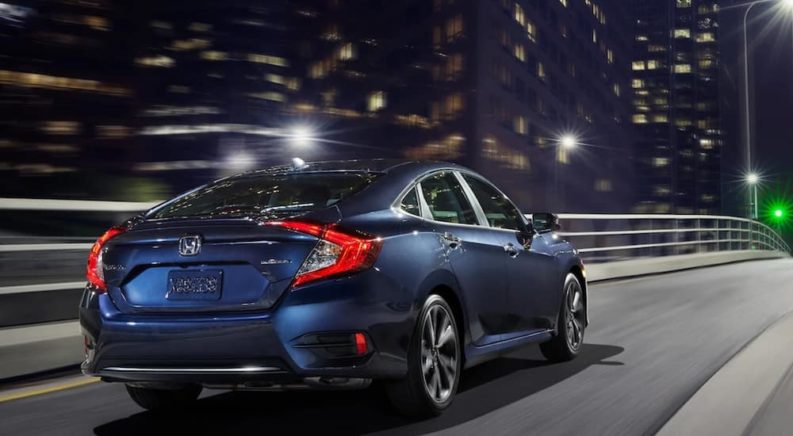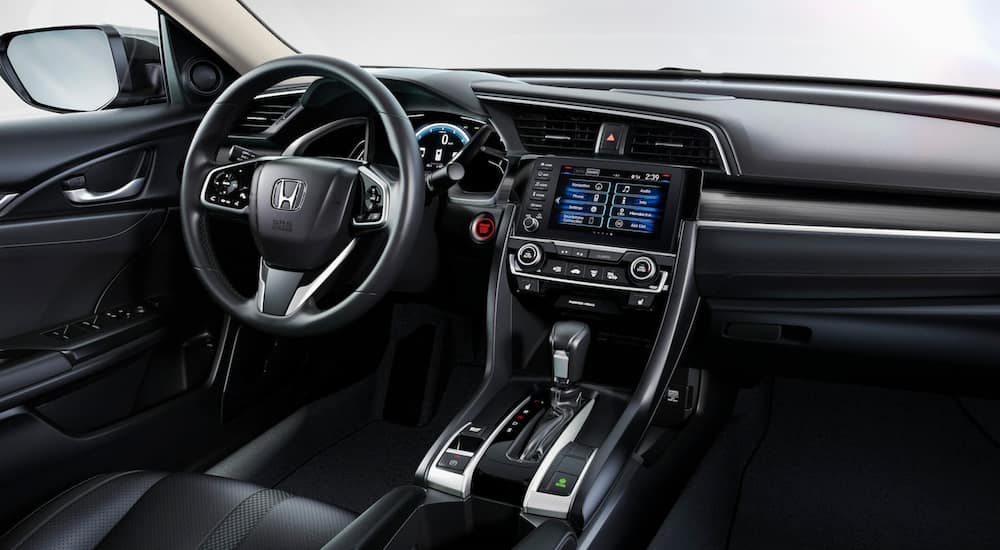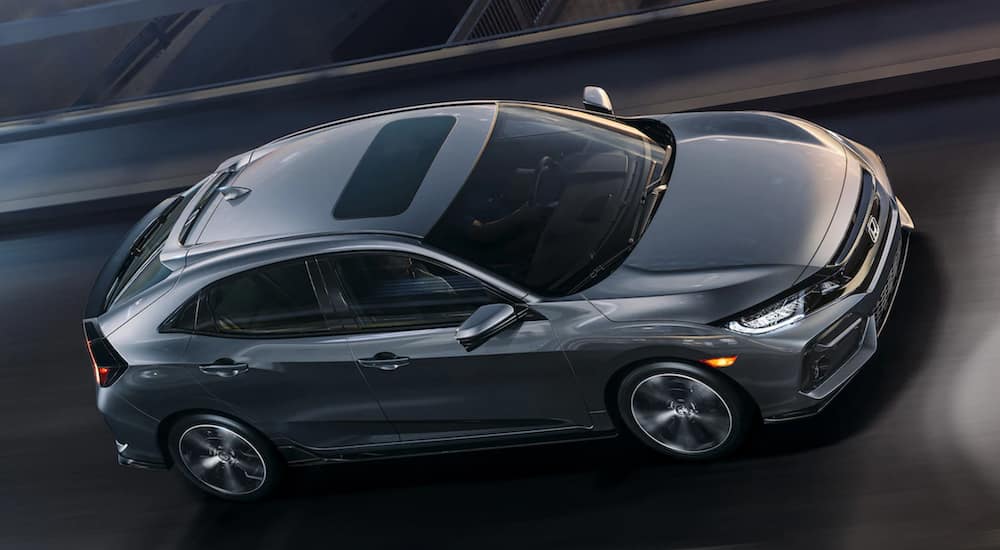The Honda Civic is a modern people’s car, a vehicle capable of being just about all things to all people. Inexpensive, practical, reliable, and fashionable, the Civic has set the standard for compact cars for some time now. That is especially true in terms of performance. Unlike the compact cars made by most other manufacturers, the Civic has long had a certain amount of street cred among enthusiasts. This reputation was earned by being lightweight and easy to modify, but it was helped along by the theatrical thrill that is the legend of VTEC. Nowadays, VTEC is just as much a car culture meme as it is an engineering system, but in both roles, it is just as capable as ever when it comes to putting smiles on faces. The question is, when browsing your local Honda Civic Dealer, what Honda Civic models have VTEC?
What is VTEC?
VTEC stands for Variable Valve Timing & Lift Electronic Control System. In effect, it is a system that maximizes power at high engine rpm and maximizes efficiency at low engine rpm. This essentially optimizes the engine’s use, as those attributes are what a driver requires at those engine speeds.
VTEC is more involved and capable than a standard variable valve timing system, as it can completely shift camshaft profiles instead of just changing the timing. The result is akin to being able to do a cam swap on the engine while underway at full throttle, switching from a mild and efficient cam profile to a more aggressive and powerful one. This allows an engine to be far more versatile, especially as it makes performance engines just as efficient around town as those purpose-built to sip fuel.
While the Honda VTEC system does provide a very noticeable performance increase, what has made the system something of a cultural icon is the theatricality with which it tends to engage. A Honda engine coming onto VTEC will thrust the occupants of the car back in their seats, as the engine note bumps up in volume and both the tachometer and speedometer begin spinning faster towards the end of their travel.
The first car to use VTEC was a supercar that could be driven comfortably every day, the legendarily competent and beautiful first-generation Honda NSX (sold as the Acura NSX here in America). Not only did the VTEC system allow the vehicle’s punchy V6 to produce power similar to a contemporary Ferrari V8, but it also cut fuel consumption dramatically on the freeway. This greater efficiency allowed a driver to cover much more distance before stopping for gas, which was complemented by the far greater reliability of the Honda V6 when compared to the exotic engines of the time. Simply put, VTEC played a big role in making the NSX the first supercar that was reliable enough to use as one’s only car.
After the NSX, VTEC technology was applied to many of Honda’s performance offerings, making them as powerful as they were economical. This included the carmaker’s international luxury brand Acura, which used the system on the NSX, Integra, and various entry-level executive luxury cars.
Naturally, though, the model most associated with VTEC over the years is the most common, the humble yet capable Honda Civic. While never meant to outrun performance cars on track or steamroll the competition on a drag strip, this plucky little car was so light and well-engineered that in some circumstances, it could do both when powered up with the proprietary Honda VTEC system.
Which 2021 Civics Have VTEC?
In terms of new Honda Civics, there are two engines available in the range that include VTEC, and they come under the hood of three different Civic models. The two engines in question are both from the incredibly well-regarded K20 series of lightweight, high-performance four-cylinder engines. The K20 series has produced arguably the best compact four-cylinder engines ever made, with eye-popping power to weight ratios, intelligently simple design, and extremely high reliability.
The two K20 engines utilizing VTEC in the 2021 Civic are the naturally aspirated K20C2 in the entry-level trims of the Civic sedan and the turbocharged K20C1 in the Civic Type R. The K20C2 uses a modernized i-VTEC system for both intake and exhaust valves, pulling the maximum efficiency possible out of the engine. Meanwhile, the K20C1 uses VTEC only on the exhaust side of the engine, with a turbocharger forcing air at high pressure into the intake side. This setup prioritizes power and adds huge amounts of horsepower and torque to the engine without the need for increased displacement.
Affordable and Fun
The highly efficient and incredibly cost-effective K20C2 finds a home in the LX and Sport trims of the Civic sedan. Not only do these engines allow for low purchase and running costs, but their lightweight makes even the humblest Civics handle corners with surprising agility. As is the Honda way, light and simple is best, as light and simple components reduce cost while increasing performance, efficiency, and fun.
The LX trim sedan is the entry-level Civic, which means that it is both the least expensive and the most lightweight Civic at just $21,250 and 2771 pounds. While the K20C2 is a medium-power engine for its size, it is highly efficient, allowing the LX Civic Sedan to achieve up to 38 miles per gallon on the highway. That impressive number is evidence that lightweight really does pay off. Slick aerodynamics also plays a role, especially at highway speed, and the modern Civic is one of the slipperiest shapes in the car’s history. And despite being the base model, this lightweight Civic still has an automatic climate control system, adaptive cruise control, and lane keep assist.
The Sport trim Civic sedan takes the basics of the LX and adds aesthetic improvements such as a center-exit exhaust, fog lights, and a spoiler. However, it’s certainly not all show, as the Civic sedan Sport includes several features to make the driver feel more special, including push-button start, paddle shifters, and leather-wrapped surfaces. You even get bright metal sport pedals.
High-Performance Honda
In terms of Honda performance, the name Type R is the be-all and end-all. Naturally, the first car in decades to arrive in American showrooms with that nameplate is something special. The turbocharged K20C1 engine in the Civic Type R belts out over 300 horsepower, but the Honda Way is still intact, and this car offers far more than just raw power. Through chassis tuning wizardry and differential setup black magic, that power can be effectively and easily transmitted to the ground through the front wheels alone. That the Civic Type R is fast surprises no one, but that the Civic Type R will outrun its rear-wheel drive and all-wheel drive rivals on the track surprises everyone.
The Beauty of VTEC
Long live VTEC! The memes, smiles, and race wins that Honda has earned with the VTEC system all form part of a culture that celebrates both reality and theatricality. Speed, power, efficiency, and reliability are all core tenets of Honda automobiles, and that includes those whose cams are hydraulically actuated. When it comes down to it, the best thing about VTEC has always been the smile it puts on a driver’s face.






